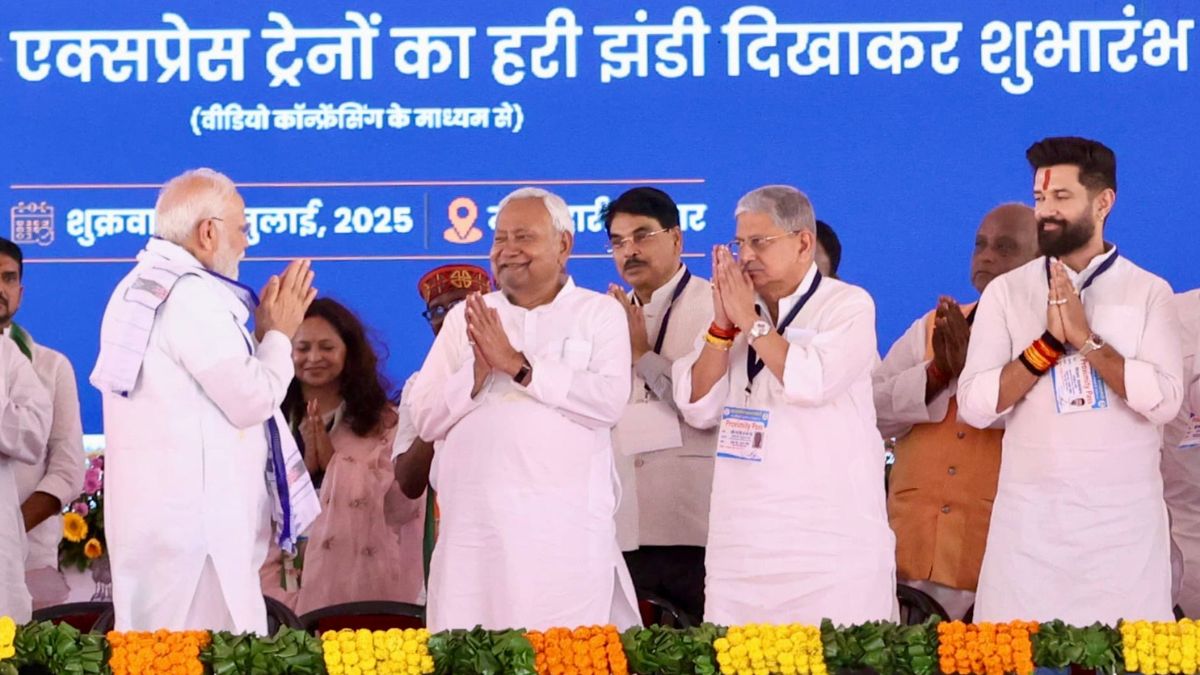From BIMARU to bright future: PM Modi's ambitious plan for Bihar ahead of assembly elections

With Bihar inching towards crucial assembly polls, Prime Minister Narendra Modi hard-sold the dream of turning the East into the new West – Bihar as a developed state, no longer among the backward states, which earned it the sobriquet of BIMARU states.
In the presence of CM Nitish Kumar and other key allies, including Chirag Paswan, Modi drew parallels between Gaya and Gurugram, Patna and Pune, to reposition the perception of Eastern India, historically dismissed as “laggard,” and align it with the BJP’s model of nationalism-led development.
“Why can’t Motihari become like Mumbai, or Gaya like Gurugram?” he asked, while also equating Patna to Pune. The comparisons served as the central theme of his address, to position Bihar not as a backward state but as a new engine of growth in Eastern India.
Modi used the metaphors of aspiration to spread a message that the time for the East has come, and only the BJP has the roadmap. He also rebranded Bihar as part of a larger political project: to centre Eastern India in its national aspiration — West Bengal, Jharkhand, and Bihar, the three states where it is not in the pole position. Odisha is where it last had its own CM for the first time.
Addressing a rally in Motihari, Modi inaugurated ₹7,000 crore worth of infrastructure projects. These included rural roads, bridges, water supply projects, and critical infrastructure. He highlighted that over 60 lakh houses have been built under the PM Awas Yojana in Bihar.
He also flagged off two trains and announced the upgradation of five railway stations, reaffirming the Centre’s focus on improving connectivity and infrastructure in the region.
PM Modi has been making regular trips to the state as the BJP eyes a return to power and even hopes to get the CM’s post, though Nitish Kumar continues to be their CM face.
Lauding the Nitish Kumar government for its recent wave of recruitments, Modi highlighted the Centre-backed initiatives: skill development, Mudra loans, and startup capital for the youth. He then drew a line between joblessness and Naxalism — referring to the decline of Left-Wing Extremism in Champaran, Gaya, Jamui, and Aurangabad.
The Prime Minister placed significant emphasis on women’s empowerment, highlighting the growing number of “Lakhpati Didis” — women from self-help groups who have become financially self-reliant. Bihar now has 20 lakh women in self-help groups, and many are now earning ₹1 lakh or more annually, he said.
For the youth, Modi mentioned a new Rs 15,000 financial assistance scheme for first-time salaried workers in the private sector, along with opportunities through Skill India and Startup India.
Modi underlined the Centre’s work in job creation, rural housing, free ration, and pensions for the poor. He cited the formation of a statutory commission for OBCs and benefits extended to Extremely Backward Classes, tribals, and Pasmanda Muslims.
By doing so, the PM was attempting to reweave the social fabric of Bihar’s politics. Traditionally dominated by Yadav-Kurmi-Muslim alliances, the BJP has been steadily working to draw in non-Yadav OBCs, EBCs, Dalits and now tribal groups, offering them visibility, dignity and schemes that reach the last mile.
Modi said during the UPA era, Bihar received only around ₹2 lakh crore, but after the BJP came in 2014, his government ended this politics of “vendetta against Bihar,” and allocated nearly ₹9 lakh crore for the state’s development.
India